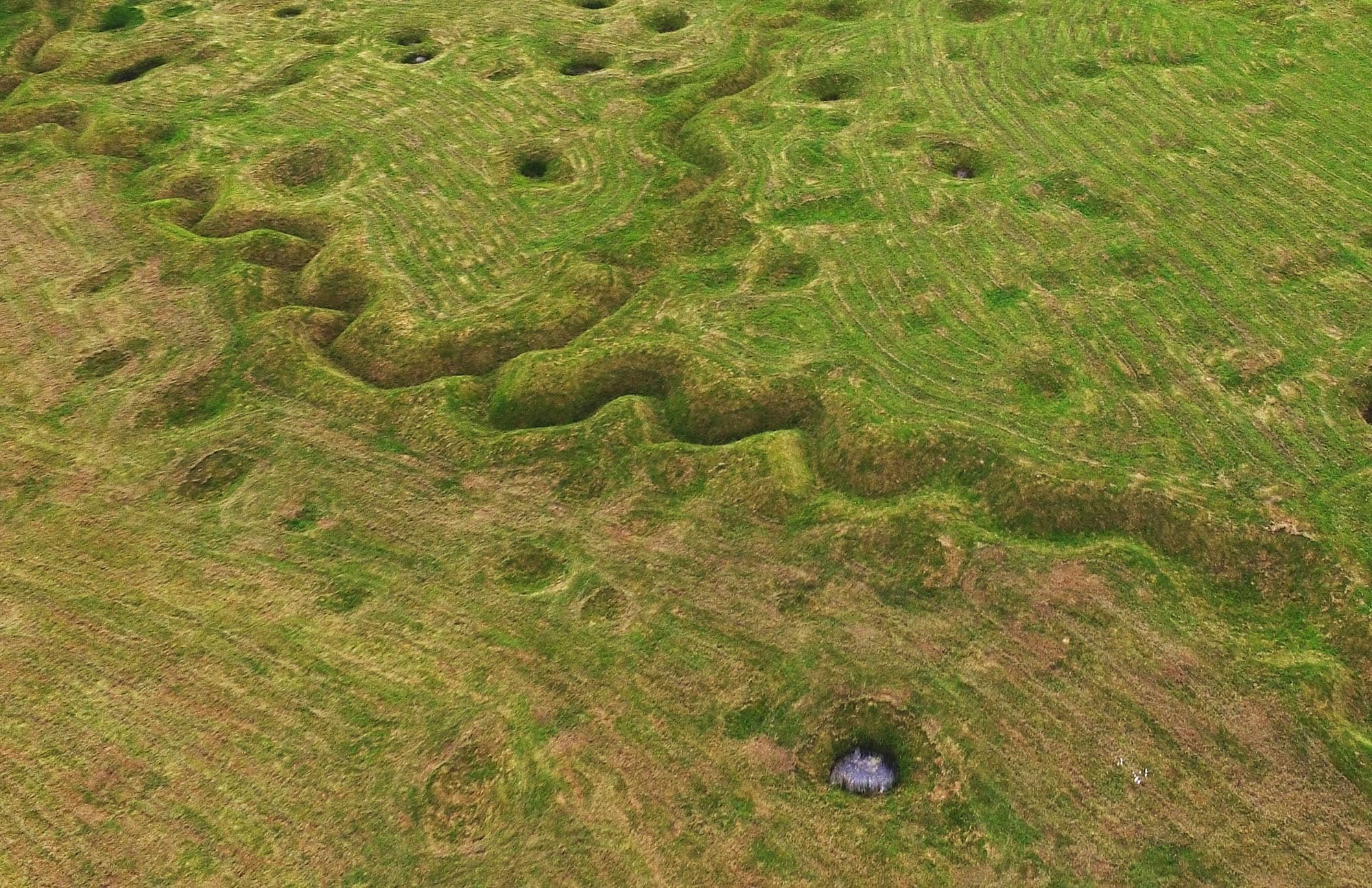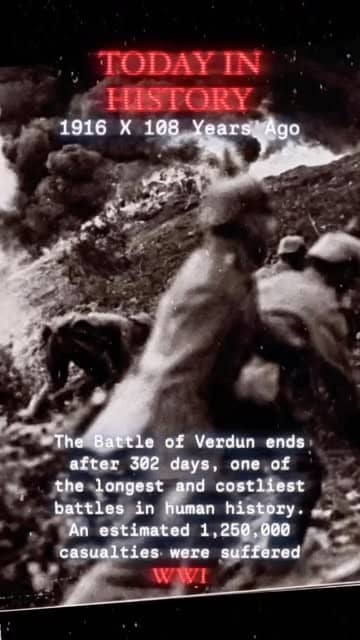Battle of Verdun
A vast WWI battlefield memorial, the Battle of Verdun offers a somber yet essential journey through one of history's most brutal conflicts.

Highlights
Must-see attractions

Social
From TikTok & Reddit
Best Time
Pleasant weather, fewer crowds
Battle of Verdun
Best Time
Pleasant weather, fewer crowds

Highlights
Must-see attractions
A vast WWI battlefield memorial, the Battle of Verdun offers a somber yet essential journey through one of history's most brutal conflicts.
"An amazing place with great history from the Battle of Verdun, offering a profound connection to the past."
🚗 Car is King
The battlefield is spread out. A car is essential for exploring multiple sites efficiently.
👟 Sturdy Footwear Needed
Expect uneven terrain and potential mud. Comfortable, durable shoes are a must for exploring.
Highlights
Discover the most iconic attractions and experiences
Fort Douaumont
Near Verdun, France
The largest and most formidable fort, a symbol of the battle's intense fighting and strategic importance.
Verdun Ossuary
Douaumont
A poignant monument housing the remains of unidentified soldiers, a powerful reminder of the battle's human toll.

Trench Systems & Craters
Various locations across the battlefield
Explore preserved trenches and shell craters, offering a visceral connection to the WWI landscape.
Plans like a pro.
Thinks like you
Planning Your Visit
Respectful Exploration
Navigating the Battlefield
Best Times
Insider Tips
from TikTok, Instagram & Reddit
🚗 Car is King
The battlefield is spread out. A car is essential for exploring multiple sites efficiently.
👟 Sturdy Footwear Needed
Expect uneven terrain and potential mud. Comfortable, durable shoes are a must for exploring.
🧭 Guided Tours Recommended
Enhance your understanding with local guides who share deep historical insights.
💧 Stay Hydrated
Bring water, especially during warmer months, as facilities can be sparse between sites.
Tips
from all over the internet
🚗 Car is King
The battlefield is spread out. A car is essential for exploring multiple sites efficiently.
👟 Sturdy Footwear Needed
Expect uneven terrain and potential mud. Comfortable, durable shoes are a must for exploring.
🧭 Guided Tours Recommended
Enhance your understanding with local guides who share deep historical insights.
💧 Stay Hydrated
Bring water, especially during warmer months, as facilities can be sparse between sites.
🤫 Be Respectful
This is a place of remembrance. Maintain a quiet demeanor and show reverence for the fallen.
What Travellers Say
Reviews Summary
Visitors find the Battle of Verdun sites incredibly interesting and historically significant, offering a profound connection to WWI. The preserved landscape, including trenches and craters, is impactful. However, some express concern over the lack of maintenance and security in open bunkers, with concerns about vandalism and safety.
"It's a good place to hike and look around. The craters are alined well enough to create connected ponds which looks amazing. The bunkers are in good shape but that's where the 3 stars come in. It seems like they're supposed to be locked but everything is open. If you're into Urban Exploring go off and have fun... For me, I found animal tracks (Dog if I had to guess) going into one bunker. I think it'd be really cool if they got looked after more to ensure people aren't going in there to destroy them."
Calvin Renfrow
"A very interesting place. So much WW1 French history here. We stayed overnight, another French was there too. So peaceful."
Julie Billingham
"Set in beautiful woodland of great history the open park around this Ouvrage offers space and tranquility for the visitor. Explore, explain and reflect on its purpose. Remembering those who suffered here in two world wars.
Lots of free parking and numerous information boards."
Roger Adcock
What People Like
What People Dislike
Frequently Asked Questions
🚇 🗺️ Getting There
The main access point is the city of Verdun. From there, a car is highly recommended to navigate the dispersed battlefield sites. Public transport is limited. Consider guided tours that often include transportation from Verdun.
While challenging, it's possible. You can base yourself in Verdun and take guided bus tours that cover the major attractions. Cycling is an option for the very fit and dedicated, but distances are significant.
Most major sites, like Fort Douaumont and the Ossuary, have dedicated parking areas. These are generally free.
Verdun is accessible by train from Paris (approx. 2-3 hours with a change). Driving from Paris takes about 3-4 hours.
Official shuttle services are not common. Your best bet for inter-site travel without a car is organized tours or taxis, which can be expensive.
🎫 🎫 Tickets & Entry
Entry to the open battlefield landscape and many information boards is free. However, specific sites like Fort Douaumont and the Ossuary typically require an admission fee.
Opening hours vary by site and season. Fort Douaumont and the Ossuary generally open around 9 or 10 AM and close between 5 and 7 PM. Always check official websites for the most current times.
Yes, many smaller structures and some parts of larger forts are accessible and can be explored, but exercise caution as they are not maintained for public safety.
Some tour operators offer packages that include entry to multiple sites. Individual sites usually sell their own tickets.
The open battlefield is accessible, but visiting specific forts or monuments at night is generally not permitted and can be unsafe.
🎫 🧭 Onsite Experience
Key sites include Fort Douaumont, the Verdun Ossuary, the Trench of Bayonets, and the Tranchée des Baïonnettes. Exploring the general landscape reveals numerous smaller fortifications and shell craters.
To cover the main sites adequately, plan for at least one full day. If you want a deeper exploration, two days would be ideal.
Yes, numerous local guides offer walking tours, car tours, and bus tours that provide in-depth historical context and access to less-known areas.
The terrain is varied, with woodland, open fields, and uneven ground. Many areas are marked by shell craters and remnants of trenches, requiring sturdy footwear.
Yes, but the historical context is somber. It's best suited for older children who can grasp the significance of the events. The Ossuary and forts can be imposing.
📸 📸 Photography
The Verdun Ossuary offers dramatic architectural shots. Fort Douaumont's interior and exterior provide unique perspectives. The open landscape with its craters and trenches is also very photogenic.
Photography is generally allowed inside most sites, but flash photography might be restricted in certain areas to protect artifacts or for atmospheric reasons.
A versatile lens (e.g., 24-70mm) is useful for both landscapes and interior shots. A wide-angle lens can capture the scale of the forts and trenches. Consider a tripod for low-light conditions inside.
Drone usage is likely restricted over memorial sites and military heritage areas. Always check local regulations before flying a drone.
Early morning or late afternoon light can create dramatic shadows and highlight the textures of the landscape and fortifications. Overcast days can also lend a somber, atmospheric quality.
For Different Travelers
Tailored advice for your travel style
👨👩👧 Families with Kids
For older children and teenagers, the forts like Fort Douaumont can be fascinating to explore, offering a glimpse into military history. However, emphasize the importance of respect and quiet contemplation. Consider guided tours that can tailor the narrative to be more accessible and less graphic for younger audiences. Ensure they wear sturdy shoes as the terrain can be rough.
🚶♂️ History Enthusiasts & Day-Trippers
Day-trippers should focus on the most iconic locations. A car is almost essential for maximizing your time. Start early to avoid crowds and allow ample time for reflection at each site. The Trench of the Bayonets and the Mémorial de Verdun (museum) are also highly recommended if time permits.
Deep Dives
In-depth insights and expert knowledge
The Scale of the Battle
German Chief of General Staff Erich von Falkenhayn's strategy was to 'bleed France white' by attacking Verdun, a city of immense symbolic importance to the French. The battle raged over a small area, with soldiers fighting for weeks to gain mere feet of ground. The landscape was utterly devastated, transformed into a moonscape of mud, craters, and barbed wire.
The human cost was staggering, with estimates of around 700,000 casualties (killed, wounded, or missing) for both sides combined. This immense loss of life left an indelible scar on the region and on the collective memory of both nations.
Exploring the Battlefield Today
Many of the fortifications, such as Fort Douaumont, are now accessible to visitors. Exploring these underground complexes provides a tangible sense of the conditions soldiers endured. However, as noted by visitors, some structures are left open, requiring careful exploration and respect for their historical significance. The Verdun Ossuary is a particularly moving monument, housing the skeletal remains of soldiers whose identities were lost to the conflict, serving as a stark reminder of the human cost.
The open parkland around these sites, often described as beautiful woodland, offers a space for reflection. Information boards scattered throughout the battlefield provide historical context, allowing visitors to piece together the events that unfolded here. It's a place to remember those who suffered and to reflect on the enduring impact of war.

Social
from TikTok, Instagram & Reddit